by Eric Meier
When attempting to identify a wood sample, it’s important to keep in mind the limitations and obstacles that are present in our task. Before starting, please have a look at The Truth Behind Wood Identification to approach the task in a proper mindset; I consider the linked article to be required reading for all those visiting my site with the intent of identifying wood.
1. Confirm it is actually solid wood.
Before proceeding too much farther into the remaining steps, it’s first necessary to confirm that the material in question is actually a solid piece of wood, and not a man-made composite or piece of plastic made to imitate wood.
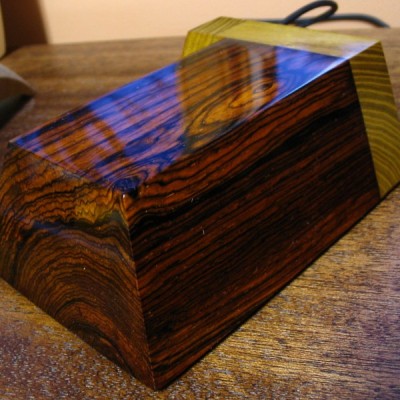
Can you see the end-grain?
Manufactured wood such as MDF, OSB, and particleboard all have a distinct look that is—in nearly all cases—easily distinguishable from the endgrain of real wood. Look for growth rings—formed by the yearly growth of a tree—which will be a dead-giveaway that the wood sample in question is a solid, genuine chunk of wood taken from a tree.
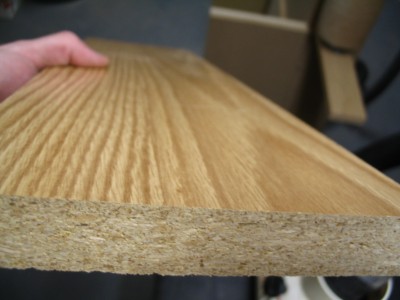
Is it veneered?
If you see a large panel that has a repeating grain pattern, it may be a veneer. In such cases, a very thin layer of real wood is peeled from a tree and attached to a substrate; sometimes the veneer can be one continuous repeating piece because it is rotary-sliced to shave off the veneer layer as the tree trunk is spun by machines. Assuming it is a real wood veneer with a distinct grain and texture—and not merely a piece of printed plastic—you may still be able to identify the outer veneer wood in question, but you should still realize that is it only a veneer and not a solid piece of wood.
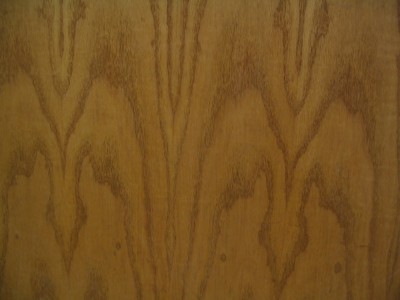
Is it painted or printed to look like wood?
Many times, especially on medium to large-sized flat panels for furniture, a piece of particleboard or MDF is either laminated with a piece of wood-colored plastic, or simply painted to look like wood grain. Many of today’s interior hardwood flooring planks are good examples of these pseudo-wood products: they are essentially a man-made material made of sawdust, glues, resins, and durable plastics.
2. Look at the color.
Some questions to immediately ask yourself:
Is the color of the wood natural, or is it stained?
If there is even a chance that the color isn’t natural, the odds are increased that the entire effort of identifying the wood will be in vain.
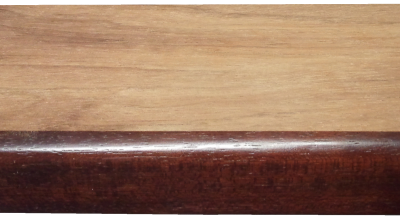
Is it weathered or have a patina?
Many woods, when left outside in the elements, tend to turn a bland gray color. Also, even interior wood also takes on a patina as it ages: some woods get darker, or redder, and some even get lighter or lose their color; but for the most part, wood tends to darken with age.
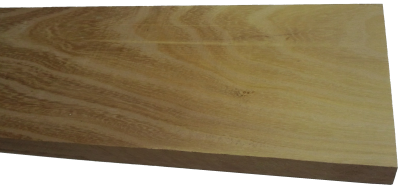
Is it possible to sand or plane the board to see the natural raw color of the wood?
The most predictable baseline to use when identifying wood is in a freshly sanded state. This eliminates the chances of a stain or natural aging skewing the color diagnosis of the wood.
3. Observe the wood grain.
If the wood is unfinished, then look at the texture of the grain. Ask yourself these questions:
Does the wood have an open, porous texture?
Most softwoods will be almost perfectly smooth with no grain indentations, while many common hardwoods have an open pore structure, such as oak or mahogany; though there are some hardwoods that are also smooth to the touch, such as maple.
Can you tell if the wood is quartersawn or plainsawn?
By observing the grain patterns, many times you can tell how the board was cut from the tree. Some wood species have dramatically different grain patterns from plainsawn to quartersawn surfaces. For instance, on their quartersawn surfaces, lacewood has large lace patterns, oak has flecks, and maple has the characteristic “butcher block” appearance.
Is there any figure or unusual characteristics, such as sapwood, curly or wild grain, burl/knots, etc.?
Some species of wood have figure that is much more common than in other species: for example, curly figure is fairly common in soft maple, and the curls are usually well-pronounced and close together. Yet when birch or cherry has a curly grain, it is more often much less pronounced, and the curls are spaced farther apart.
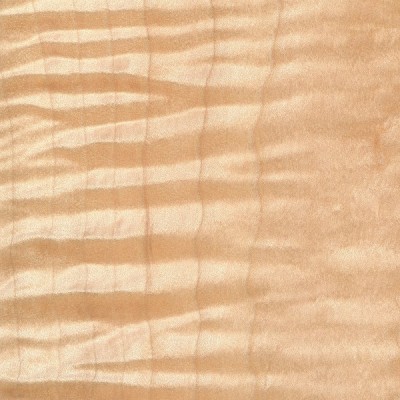
4. Consider the weight and hardness of the wood.
If it’s possible, pick the piece of wood up and get a sense of its weight, and compare it to other known wood species. Try gouging the edge with your fingernail to get a sense of its hardness. If you have a scale, you can take measurements of the length, width, and thickness of the wood, and combine them to find the density of the wood. This can be helpful to compare to other density readings found in the database. When examining the wood in question, compare it to other known wood species, and ask yourself these questions:
Is the wood dry?
Wood from freshly felled trees, or wood that has been stored in an extremely humid environment will have very high moisture contents. In some freshly sawn pieces, moisture could account for over half of the wood’s total weight! Likewise, wood that has been stored in extremely dry conditions of less than 25% relative humidity will most likely feel lighter than average.
How does the wood’s weight compare to other species?
Taking into account the size of the board, how does its weight compare to other benchmark woods? Is it heavier than oak? Is it lighter than pine? Look at the weight numbers for a few wood species that are close to yours, and get a ballpark estimate of its weight.
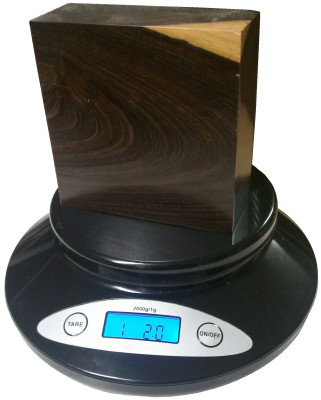
How hard is the wood?
Obviously softwoods will tend to be softer than hardwoods, but try to get a sense of how it compares to other known woods. Density and hardness are closely related, so if the wood is heavy, it will most likely be hard too. If the wood is a part of a finished item that you can’t adequately weigh, you might be able to test the hardness by gouging it in an inconspicuous area. Also, if it is used in a piece of furniture, such as a tabletop, a general idea of its hardness can be assessed by the number and depth of the gouges/dings in the piece given its age and use. A tabletop made of pine will have much deeper dents than a tabletop made of Oak. Additionally, you can always try the “fingernail test” as a rough hardness indicator: find a crisp edge of the wood, and with your fingernail try to push in as hard as you can and see if you’re able to make a dent in the wood.
5. Consider its history.
Many times we forget common sense and logic when attempting to identify wood. If you’ve got a piece of Amish furniture from Pennsylvania, chances are more likely that the wood will be made of something like black walnut or cherry, and not African wenge or jatoba. You might call it “wood profiling,” but sometimes it can pay to be a little prejudiced when it comes to wood identification. Some common-sense questions to ask yourself when trying to identify a piece of wood:
Where did it come from?
Knowing as much as you can about the source of the wood—even the smallest details—can be helpful. If the wood came from a wood pile or a lumber mill where all the pieces were from trees processed locally, then the potential species are immediately limited. If the wood came from a builder of antique furniture, or a boat-builder, or a trim carpenter: each of these occupations will tend to use certain species of woods much more often than others, making a logical guess much simpler.
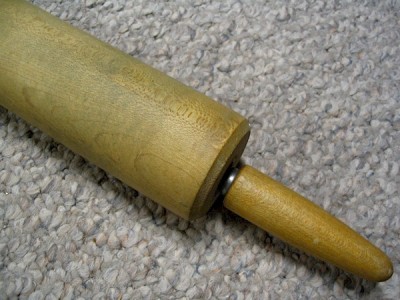
How old is it?
As with the wood’s source, its age will also help in identification purposes. Not only will it help to determine if the wood should have developed a natural patina, but it will also suggest certain species which were more prevalent at different times in history. For instance, many acoustic guitars made before the 1990s have featured Brazilian rosewood backs/sides, yet due to CITES restrictions placed upon that species, East Indian rosewood became a much more common species on newer guitars. (And this is a continuing shift as newer replacements are sought for rosewoods altogether.)
How large is the piece of wood?
Some species of trees are typically very small—some are even considered shrubs—while others get quite large. For instance, if you see a large panel or section of wood that’s entirely black, chances are it’s either painted, dyed, or stained: Gaboon ebony and related species are typically very small and very expensive.
What is the wood’s intended use?
Simply knowing what the wood was intended for—when considered in conjunction with where it came from and how old it is—can give you many clues to help identify it. In some applications, certain wood species are used much more frequently than others, so that you can make an educated guess as to the species of the wood based upon the application where it was used. For instance, in the United States: many older houses with solid hardwood floors have commonly used either red oak or hard maple; many antique furniture pieces have featured quartersawn white oak; many violins have spruce tops; many closet items used aromatic red cedar, and so forth. While it’s not a 100% guarantee, “profiling” the wood in question will help reduce the number of possible suspects, and aid in deducing the correct species.
6. Find the X-Factor.
Sometimes, after all the normal characteristics of a sample have been considered, the identity of the wood in question is still not apparent. In these instances—particularly in situations where a sample has been narrowed down to only a few possible remaining choices—it’s sometimes helpful to bring in specialized tests and other narrower means of identification.
The following techniques and recommendations don’t necessarily have a wide application in initially sorting out wood species and eliminating large swaths of wood species, but will most likely be of use only as a final step in special identification circumstances.
Odor
Believe it or not, freshly machined wood can have a very identifiable scent. When your eyes and hands can’t quite get a definitive answer, sometimes your nose can. Assuming there is no stain, finish, or preservative on or in the wood, quickly sand, saw, or otherwise machine a section of the wood in question, and take a whiff of the aroma.
Although new scents can be very difficult to express in words, many times the scent of an unknown wood may be similar to other known scents. For instance, rosewoods (Dalbergia spp.) are so named for their characteristic odor that is reminiscent of roses. Although difficult to directly communicate, with enough firsthand experience scents can become a memorable and powerful means of wood identification.
Fluorescence
While certain woods can appear basically identical to one another under normal lighting conditions, when exposed to certain wavelengths—such as those found in blacklights—the wood will absorb and emit light in a different (visible) wavelength. This phenomenon is known as fluorescence, and certain woods can be distinguished by the presence or absence of their fluorescent qualities. See the article Fluorescence: A Secret Weapon in Wood Identification for more information.
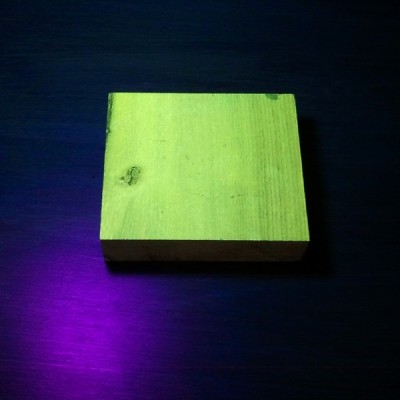
Chemical Testing
There are only a small number of chemical tests regularly used on wood, most of which are very specialized and were developed to help distinguish easily confused species with one another. They work by detecting differences in the composition of heartwood extractives. A chemical substance (called a reagent) is usually dissolved in water and applied to the wood surface: the surface is then observed for any type of chemical reaction (and accompanying color change) that may occur. Two of the most useful are the tests that are meant to separate Red and White Oak, and Red and Hard Maple.
Heartwood Extractives Leachability
Sometimes a wood species will have heartwood extractives that will be readily leachable in water and capable of conspicuously tinting a solution of water a specific color. For instance, the heartwood extractives contained in osage orange (Maclura pomifera) contain a yellowish-brown dye that is soluble in water. (This can sometimes be observed anecdotally when the wood is glued with a water-based adhesive: the glue’s squeeze-out is an unusually vibrant yellow.)
In a simple water extract color test, wood shavings are mixed with water in a vial, test tube, or other suitably small container, and the color of the water is observed after a few minutes. If the heartwood extractives are leachable by water, then a corresponding color change should quickly occur.
In addition to osage orange (Maclura pomifera), merbau (Intsia spp.), and rengas (Gluta spp. and Melanorrhoea spp.) are also noted for their readily leachable heartwood extractives. Because this property is quite uncommon, it can serve to quickly differentiate these woods from other lookalikes.
7. Look at the endgrain.
Perhaps no other technique for accurate identification of wood is as helpful and conclusive as the magnified examination of the endgrain. Frequently, it brings the identification process from a mostly intuitive, unscientific process into a predictable, repeatable, and reliable procedure.
Looking at the endgrain with a magnifier shouldn’t be a mystifying or esoteric art. In many cases, it’s nearly as simple as examining small newsprint under a magnifying glass. There are three components necessary to reap the full benefits contained in the endgrain:
I. A prepared surface.
When working with wood in most capacities, it becomes quickly apparent that endgrain surfaces are not nearly as cooperative or as easily worked as face grain surfaces. However, in this case, it is absolutely critical that a clear and refined endgrain surface is obtained.
For a quick glance of a softwood sample, a very sharp knife or razor blade can be used to take a fresh slice from the endgrain. However, in many denser species, especially in tropical hardwoods, one of the best ways to obtain a clear endgrain view is through diligent sanding. It’s usually best to begin with a relatively smooth saw cut (as from a fine-toothed miter saw blade) and proceed through the grits, starting at around 100, and working up to at least 220 or 320 grit, preferably higher for the cleanest view.
II. The right magnifier.
It need not be expensive, but whatever tool is used to view the endgrain should have adequate magnifying power. In most instances, 10x magnification is ideal, however, anything within the range of 8 to 15x magnification should be suitable for endgrain viewing. (Standard magnifying glasses are typically in the range of 2 to 4x magnification.)
These stronger magnifiers, sometimes called loupes, usually have a smaller viewing area than standard magnifying glasses. Fancier models—with built in lights, or larger viewing surfaces—are available at a premium; but the most basic models are usually only a few dollars.
III. A trained eye.
The third element that constitutes a proper endgrain examination is simply knowing what to look for. In analyzing the patterns, colors, shapes, and spacing of the various anatomical features, there is a veritable storehouse of information within the endgrain—all waiting to be unlocked. Yet, if these elements have not been pointed out and learned, the array of features will simply seem like an unintelligible jumble. The discipline of recognizing anatomical endgrain features is not easily summed up in a few sentences or even a few paragraphs, but it is nonetheless critical to the identification process. To this end, an in-depth look should be given to the various categories, divisions, and elements that constitute endgrain wood identification on the macroscopic level. (In this regard, macroscopic denotes what can be seen with a low-powered, 10x hand lens—without the aid of a microscope—rather than simply what can be seen with the naked eye.) Because the anatomy between softwoods and hardwoods is so divergent, each will be considered and examined separately:Still stumped?
If you have a mysterious piece of wood that you’d like identified, you’ve got a few options for next steps:USDA’s Forest Products Laboratory
You can mail your physical wood samples to the Center for Wood Anatomy Research.
Pros:
- Free
- Professional wood identification
Cons:
- Only available to US citizens
- Slow turnaround times (up to a month or more)
- Limited to three IDs per year
See their Wood ID Factsheet for more info.
Alden Identification Service
You can mail your physical wood samples (even small sections taken from antiques) to Alden Identification Service.
Pros:
- Professional wood identification
- Faster turnaround times (ranging from a few days to a week or two)
Cons:
- Paid service
See their ordering page for more info. (Note that Harry Alden has written several books while at USDA, including both Hardwoods and Softwoods of North America.)
Ask for help online
If the wood ID is merely a curiosity, or non-critical, you can post pictures of the wood in question.
Pros:
- Free
- No need to send physical samples
Cons:
- Greatly limited by the quality of the pictures provided
- Extra work usually required to get adequate clarity in photos
See article of Common US Hardwoods to help find the most commonly used woods.
Get the hard copy
 If you’re interested in getting all that makes The Wood Database unique distilled into a single, real-world resource, there’s the book that’s based on the website—the Amazon.com best-seller, WOOD! Identifying and Using Hundreds of Woods Worldwide. It contains many of the most popular articles found on this website, as well as hundreds of wood profiles—laid out with the same clarity and convenience of the website—packaged in a shop-friendly hardcover book.
If you’re interested in getting all that makes The Wood Database unique distilled into a single, real-world resource, there’s the book that’s based on the website—the Amazon.com best-seller, WOOD! Identifying and Using Hundreds of Woods Worldwide. It contains many of the most popular articles found on this website, as well as hundreds of wood profiles—laid out with the same clarity and convenience of the website—packaged in a shop-friendly hardcover book. 





Why I will no longer be replying to every wood ID request I’ve replied to literally thousands of wood ID requests on this site over the past 13+ years, but as the site’s popularity has grown, so has the time demands for ID on a daily basis. (Contrary to what some may seem to think, I am not some all-knowing wood wizard that can instantly ID your wood. It can actually take me a long time to sift through a lot of different resources.) Over the past few years, my backlog of pending wood species to be added to the… Read more »
I bought this dresser, identical to the l e pictures. It is burl wood and in great shape. I paid $275. Did I get a deal?
Looks to be a great piece with lots of storage. $275 is a great deal!
Pictures of the inside of the piece would help to show what the structural components are made from. Burl wood is a type of wood grain, but not a species of tree. Closer pics would make it easier to determine which type of burl.
We bought this table in Michigan, USA in 2002. Can anybody pls identify the wood for me.
Looks like pine
I would also say Pine. There are many many kinds of pine, and some in fact make great furniture. Looks to be a solid piece! Enjoy!
hi there.A VERY helpful article there and you guys are amazing.
BUT i need your help in order to identify this wood.I ordered it from ebay and the seller had it listed as “flame maple”.But i know it isnt (or its not a plain flame maple or something).Here it is with some water on it
Looks like maple to me. Figure in maple can take all sorts of varieties and combinations. Flame maple is another way of saying curly maple, and you appear to have a somewhat unorthodox example of this.
thank you for replying.I know its maple but heres the deal.I cant find similarities with buckeye burl or spalted or quilted or flame maple.I want to identify it because its going on a bass guitar top and i want to write some specs on it.
Thnx again
Awesome!!
Thank you very much :)
Any idea what this wood is?
Can’t tell from the pics, sorry.
Hi Eric,
Would you be able to tell me what type of wood this table is made of?
And this is a bed frame. And thanks for all the work you’ve put in here Eric. Appreciated by many Im sure
Hi. Can you tell me what kind of wood this is? It is a dining set.
Can you get individual pictures closer up to the grain?
I hope it’s what you meant
I figured out this one. Italian Beech. Hunted down the Italian company. Now if you could figure out the bedframe, that would be awesome.
And the bed frame with some scratches for natural colour
Hi there! Any idea what this dresser is made from?
Assuming the color is natural and not stain, it most resembles walnut.
I bought this table off of a local site and am thinking of refinishing it and the matching buffet but I would like to know what I am working with. Could you offer any insight on what it is made of from my pictures? Are the swirls in the grain or drawn on? There appears to be a thick protectant on the pieces. I have searched all over the internet and cannot find anything to go off of. Thank you.
Those swirls are not part of the wood grain. It looks like dyed wood from the 70s or early 80s based on the “flyspecking” effect applied on the top (little dark brown dots). Also, from the wear near the edges of the table, this may be simply veneered and not solid wood, possibly just birch plywood. If that’s the case, I would say that it is not a very good candidate for refinishing.
Here is the second wood.
Sanding old trim in a midwestern (Ohio) home built in 1899. Any clues as to what two woods I am uncovering ? One is a green hue the other light brown
Hello Eric, It seems like you’re the “Guru” for identifying wood species. About a year ago I ran across an ad on Craigslist. Long story short, I bought a hoard of exotic woods from a kid who inherited a cache from his Grandfather who had passed away. His grandfather was a craftsman in Key West and would make small cabinets, jewelry boxes, and other small pieces of furniture. I have many pieces of wood which are truly exotic and I have no idea what they are. I milled one piece of this mystery wood recently and it very much resembles… Read more »
Hi there! I’m taking apart my deck and wondering what kind of wood this is and whether or not crafty people would be interested in it for indoor farmhouse type project that are so trendy,
If so, what do I sell it for?
Hi i´m having a hard time figuring out what species of wood this might be?
can i please get some help?
best regards
I was wondering if anyone knew what type of wood this hand carved item was. I picked this up at an auction because I liked it but I cannot find out anything about it. If I knew the wood maybe it would narrow down the area it was carved in. It is 14″ long and 6 1/4″ wide. Depth is 2 1/2″. It weighs 9.98 oz. and seems to be very light in weight for the size. Almost like a hard balsa type wood??. Any help wood be appreciated. Also it looks like it was never finished with any stain… Read more »
Thanks for all the help. I do have one other tree I was curious about. It has a dark colored bark. When cut it looks orange colors inside and seems to retain a lot of water/moisture. Thanks again….
Hi! I bought this table but I would love to know if you can tell me what kind of wood they use to make it cause I’m Mexican and the texture of it is very different from other wood furniture that I bough. According to a lady that saw me buying the table it was not a table but it was a door but it has many uses for it. I gladly appreciate your
Impossible to tell from the picture, sorry!
I wanted to know if I could inlist your help, I am looking to identify what wood this flooring is made from. Thank you for your help in advance.
Oak
Antique buffet – Top is veneer. I’m thinking Mahogany??? Help!!
I recently cut up a tree that fell down in central Kentucky that I would like to identify. My first guess would be Walnut but I’m not sure. Any thoughts?
Can’t tell from the picture, it’s far too rough of a surface. See if you can get a clear surfaced shot of the face grain, as well as a closeup shot of the endgrain (take a very light pass with a chop saw to clean it up first).
Here are some additional pictures after running a piece through my planer and cross cutting ends. Thank you for your help!
End grain…
Initially it reminds me of some types of fruitwood such as plum or apple; does it have a somewhat fruity smell when being machined? Would need a closer shot of the endgrain (basically as close as the camera is physically capable of focusing) to have a better chance at ID.
I can’t say it has a fruity smell when cut, maybe a very mild sweet smell (I wouldn’t rely on my smell for an ID). Let me know if additional pictures will help.
Looking at your closeups it appears to be a ring porous (or semi ring porous) hardwood. The coloration and growth rings reminds me of fruitwood. It can be very difficult to distinguish between different fruitwood species.
Walnut is possible as well as Kentucky coffee tree… to me it looks much more like the honey locust tree…
Any thoughts? Some scrap I got from a local cabinet shop. I’m guessing chestnut?
That’s oak; you can tell by the big rays on the end grain that separate it from chestnut.
I have a game table that is veneered and a solid wood. Not sure what it is. Could be one kind of wood and stained a different wood color. It’s old not sure help. The photo comes out lighter then the item is in person under house lights.
I have two wood turned goblets but not sure what they have been made from, can anyone help please? Photo attached. Thank you in advance
Hello I would appreciate any assistance determining what kind of wood this would be. Thank you
That looks a lot like grafted pistachio to me. I have a guitar made from it…
This…
Hi there, this appears to be Indian sheeshwood.. I have a hallway table made of the same stuff
Hi: I’d like to know what kind of wood is my table. I have attached photos of the table top and back of the table top. Thanks in advance.
forgot attach photo, here it is … can someone tell what kind of wood it might be ?
walnut
Hi, i live in Australia and came across this beauty on curbside pickup. It has an unusual wood pattern, the inside of the drawer is not stained and varnished so thats the first pic, will add more after. I would like to know what wood the dresser is made from please?
The dresser
The dresser top
Based on your location I would guess it was a type of silky oak.
Hey I see that this is labeled as “sweet gum” But im hesitant. I have seen it in person, and it more closely resembles an oak with its texture and and grain. But the wood is a very bright reddish orange, with a thick white sapwood. It came from Long Island. But it doesn’t seem to have that tight interlocking grain or as brown of a heartwood as sweet gum. The tree is also very large.
Initially I would be more inclined to agree with the label of sweet gum rather than oak. If you can get clear a shot of the endgrain it should be pretty easy and decisive to tell the two apart.
will do thanks!
Here is the endgrain
is this walnut? rosewood? what?
Can’t tell 100% from the picture, but it sure looks like walnut to me.
Any idea what this is. Thinking about sanding and remodeling
My scrap-wood guy gave me a piece of mystery wood from a crate. After cutting the routed groove off of it, I was seeing an orange color an some curl. I trimmed and planed it and rubbed a touch of mineral oil on it. My guess was curly mahogany, but it’s more dense than any other type of mahogany I own. Any ideas on what this is?
Looks really nice, my guess would be Sapele. Did it have a nice odor to it when you were working with it?
Can you distinguish what the ceiling boards are here. The building is from 1950. Sorry I don’t have a close up, the ceiling is 30 ft up. They look to have a bit of honey color to them.
Hi, this may be an easy one, it is a piece from a truss. Building constructed on the coast of SC in 1950.
This is the end grain
Preliminary, it looks like a dense softwood, possibly a species of yellow pine. You would really need to clean up the endgrain (take a fresh, light pass off the end with a chop saw) and get a much closer picture to get a better idea of wood ID.
I have had very hard undertaking task of removing this lumber from older wooden yachts.
Alot of time when you have a mohagany yacht and it needs repairs and the repair shop dosen’t have access to exzatic lumber so the next best thing is Georgia Pine. looks soft but i bet you,ll have a very hard time removing this georgian evergreen.
Hello! I’m repairing an old chair that broke a piece off the rail. can you tell me what type wood it appears to be? Thanks!
Maple or pine? Pic 2
Can you take a very light fresh pass with a chop saw (or thoroughly sand) the endgrain and take another close up picture? Can’t make out any details to get a positive ID.
Hello-
Love that you are so helpful. Thank you for your time. Do you think this is pine or maple? Thank you!
Almost impossible to tell from the pic, but if I absolutely had to guess, I’d be more inclined to say it was maple — maple that’s been stained with a walnut-like color stain where it wasn’t pre-sanded beforehand to get out the planer marks, hence the horizontal lines across the board that are accentuated by the stain.
Last one
One more
Can you take a very light fresh pass with a chop saw (or thoroughly sand) the endgrain and take another close up picture? Can’t make out any details to get a positive ID.
Fiji Plantation grown Mahogany.
Hi Eric,
Great Site, seems like you actually answer people’s questions on here, so hoping you can help out.
My boss wanted to do genuine mahogany flooring for his home, and I found a place that said they had Fiji, plantation grown genuine mahogany, which my boss said sounded good. His main goal is to not have African Mahogany, or Santos Mahogany.
The guys gave us a sample, and I was hoping you could give some indication of what it might be (I know you won’t be able to say exactly, but maybe at least that it is mahogany?)
Eric, last one Thanks!
Eric, another pic of the grain of the wood
Hello Eric, Pic of the broken wood It only takes one pic at a time?
Hello Eric!
I am involved in a restoration project for wood furniture of late 19th century. I’m trying to identify the type wood used and I have a few pics of the grain and one pic of the wood broken. Can you please help me? Thanks!
Kind Regards
Greg
Based on the grain and the age of the piece, I’m going to say genuine mahogany. https://www.wood-database.com/wood-articles/mahogany-mixups-the-lowdown/
What kind of wood is this? There are two types. One I was told is red oak (but I can’t smell it like usual). The other doesn’t seem to have pores like the “red oak”.
This wood is used as the glides for under a table to extend it.
This is at 30x or 60x.
More photos at https://photos.app.goo.gl/kqfuGTDJ6wfe3yeg2
After looking over all your photos, it looks like you’ve got a whole lot of different types of woods. I would guess that the lighter colored diffuse porous wood is probably maple. While the others appear to be mostly red oak, though I did see one picture with tyloses, which would indicate white oak, as well as other pieces that are probably ash, or even honey locust.
Crazy, this is one table that my wife bought to repurpose. All we were told was that it was old. The “T’ shaped small pieces are all the same. In pic #2 & #3 via the link show them. The lighter color one is just a fresh cut of the more red one. Pic #4 (wood with a gouge) is the long stretchers you see in the first 3 pics. Pic #6-#8 are the same but not pictured anywhere else in the link. It is basically a 1×6 board that a table leg was attached to. Pics #9-#12 are the… Read more »
To summarize based on your comments:
Pics 2-3: ring porous hardwood, not oak. Some suspects could be honey locust (check for fluorescence), ash, chestnut (if it’s very lightweight), or coffeetree (also fluorescent).
6-8: most likely red oak
9-12: possibly maple
Updated with a couple photos using Ferrous sulfate. I assume pics 9-12 are maple based on the color change. I have a black light somewhere. I will test the other pieces. Thanks!
I am rehabbing my 1895 home in Cincinnati Ohio. I am stripping down my second floor woodwork. Usually in non public areas of old homes they used softer, cheaper wood such as pine but this seems too heavy and has great grain. What do u think they used
Closer shot of window sills
Baseboard
This looks like a stained softwood. Possibly yellow pine or douglas fir.
Hi Again,
The wood looks different in this other drawer so I’m not sure if that means anything or if it’s different wood?
Very much appreciated!
Tina
More than likely oak. With these painted pieces, the type of wood used generally is less critical, and it’s not uncommon for drawers to use a different wood type than the rest of the body of the piece.
Hi Eric, thank you for the informative article!
Any chance you can help me identify the wood used for this chest of Drawers that was given to me.
Hi 2nd 1. Oak??
Hi got this and out tung oil and polyurethane seaker on it. Any ideas i think its oak. Got other 1 same